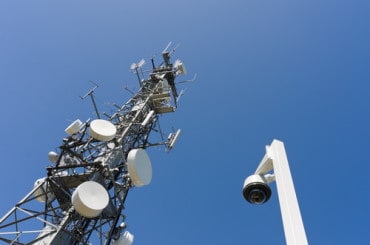
Increased use of real-time and automation technologies and innovations in 2023 can produce quantifiable benefits, cost savings, and improved customer engagements.
As we enter the new year, several real-time and automation trends and technologies warrant attention. The main reason: both are becoming increasingly necessary in many industries and application areas.
Let’s first look at real-time developments. As we reported in 2022, real-time impacts the bottom line. The Speed to Business Value report, based on a KX and the Centre for Economics and Business Research (CEBR) survey of 1,200 companies, found that 80% of the companies saw revenue increases that could be directly related to their investment in real-time data analytics.
Perhaps the most important area to focus on when looking for the impact of real-time in the new year is the growing need for real-time situational awareness and insights. Businesses can leverage such data and the insights derived from analytics to improve operations and more. Applications abound in areas including supply chain management, customer engagement, and fraud detection/prevention. Examples include:
- Overcoming the Challenges of Building a Real-time Architecture for Audience Engagement
- Consumer Fraud’s Rapid Rise: Key Areas of Focus for Public Safety Agencies
- Study Finds Innovation-Led Supply Chain Officers Outperform Peers
Success in any area is due to the availability of vast amounts of real-time data and easy-to-use and highly scalable analytics solutions, platforms, and cloud-based services.
Let’s start with the data. It can be clickstreams on an online retailer’s website, location data from a customer’s cell phone, status data (performance, operating speed, temperature, etc.) from an Internet of Things (IoT) device, or something else.
To use that data, businesses will need to invest in infrastructure. That might include an event-driven architecture, a system that can use streaming data, or application components that provide real-time access to data via APIs.
Automation and RPA
Automation can give businesses the edge needed to remain agile and relevant in today’s competitive marketplace. It can help reduce costs, save time, and increase accuracy. In 2023, expect many businesses to prioritize ways to apply automation throughout their organizations and operations.
By introducing automation to the everyday employee experience, businesses can help ensure individuals are not inundated with growing workloads, waste time on repetitive tasks, and reduce inefficiencies. As such, automation provides businesses and workers more time to focus on meaningful, higher-value tasks.
There is no doubt automation of business processes can be a powerful tool. Whether it’s retail, manufacturing, shipping, or any other industry, robotic process automation (RPA) can eliminate tedious tasks, increase accuracy, and add value to a company’s bottom line.
As we saw last year, RPA is essentially software that enables digital workers (“bots”) to carry out step-by-step tasks or business processes within existing systems and applications, much like a human would.
A few examples from last year show the types of applications of these technologies businesses should strive to make more common in 2023. They include:
- New Zealand-based Fonterra’s uses a bot to help re-classify its dairy inventory when it has an excess supply. By hand, this process involves 38 checks in company systems to make sure the re-classified product meets customer and regulatory requirements. And there are at least 30 of these requests every day. The bot, however, conducts all the necessary regulatory checks. It can evaluate natural language reports or structure data to determine a product’s eligibility for re-classification and even email human workers for help if it gets confused. It can shave two hours of work down to 10-20 minutes, and Fonterra credits the bot with saving it more than NZ $180,000 every year.
- Nationwide’s use of bionic team members that provide an individual associate serving a customer with a team of bots to perform all of the mundane work rapidly. In our article, the author gave an example to illustrate how these bionic team members worked in conjunction with the human agent. Take the case of when a customer calls in to report a catastrophe, such as a house fire. The call is automatically routed to a customer service agent. In the background, automated processes interacting with third parties perform routine tasks for that particular type of incident. So, in the case of a house fire, different bots would reserve a hotel room, arrange for a rental car, and deposit money into the customer’s bank account to cover emergency expenses such as food and other essentials.
In the new year, businesses should be examining business processes to determine the best ways to process transactions, store data, place orders for new supplies, and more. Beyond simple automation, RPA processes should use artificial intelligence (AI), machine learning (ML), and other advanced computer technologies to build a foundation that streamlines entire business processes.
A final word
The use of real-time data and analytics plus automation and RPA are areas businesses should focus on in 2023 to improve operations and better serve their customers. As we saw last year, using these technologies and innovations led to quantifiable benefits, cost savings, and improved customer engagements. There are many operational elements and business function areas that can benefit from these technologies.






























